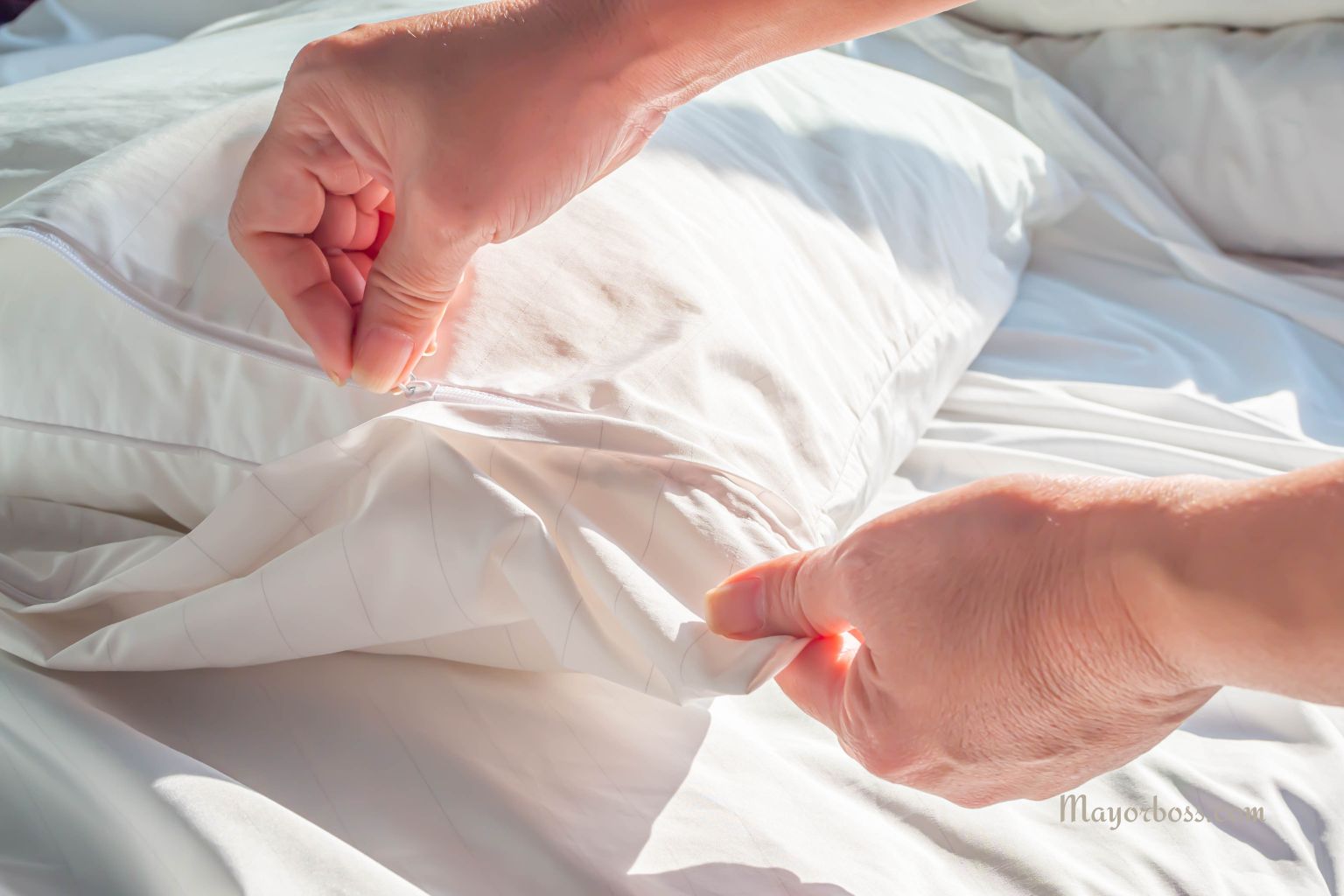How to Successfully Get Rid of Dust Mites
To successfully get rid of dust mites, regularly wash bedding in hot water, use allergen-proof mattress and pillow covers, lower indoor humidity, vacuum with a HEPA filter, and declutter your home. These steps reduce dust mite populations and help manage allergy symptoms.

What Are Dust Mites?
Dust mites are tiny creatures that live all around us, even though we can’t see them. They often settle into bedding, mattresses, carpets, and soft furniture. Most people never notice dust mites, but these invisible pests can trigger allergy and asthma symptoms, especially if you’re sensitive to their presence.
Because they feed on dead skin cells and thrive in warm, humid spots, beds and upholstered furniture provide the perfect environment. According to allergists, even the cleanest homes can have dust mites, so managing them is less about spotless cleaning and more about using smart, targeted strategies. 1
Why Should You Care About Dust Mites?
While dust mites themselves aren’t harmful, their droppings and body fragments can become airborne and trigger allergic reactions. Common symptoms include sneezing, runny nose, itchy eyes, coughing, and even asthma attacks. For people with allergies or asthma, managing dust mites can mean fewer symptoms and a better quality of life.
Where Do Dust Mites Live?
Understanding where dust mites hide can help you target them. The most common places include:
- Mattresses and pillows
- Bed sheets, blankets, and comforters
- Carpets and rugs
- Upholstered furniture
- Curtains and soft toys
If you or your family often wakes up with allergy symptoms, your bed is likely the main source.
Signs Dust Mites Are in Your Home
You won’t see dust mites, but you might notice signs such as:
- Worsening allergy or asthma symptoms, especially at night or in the morning
- Frequent sneezing, runny nose, or itchy eyes indoors
- Coughing or wheezing that gets better when you leave the house
If these symptoms improve outside your home, dust mites may be to blame.2
How to Get Rid of Dust Mites
Let’s walk through science-backed steps to reduce dust mites in your home.
1. Wash Bedding Weekly in Hot Water
Dust mites can’t survive high temperatures. Wash sheets, pillowcases, and blankets at least once a week in water that’s at least 130°F (54°C). This kills mites and removes their droppings. Dry bedding in a hot dryer.3
2. Use Allergen-Proof Mattress and Pillow Covers
Encasing your mattress and pillows in tightly woven, zippered covers creates a barrier that dust mites can’t get through. Look for covers labeled “allergen-proof” or “dust mite proof.” These covers are recommended by allergists and can significantly reduce your exposure.
3. Reduce Indoor Humidity
Dust mites need moisture to survive. Keeping indoor humidity below 50% makes it difficult for them to thrive. Use a dehumidifier or air conditioner to control humidity. Ventilate bathrooms, kitchens, and laundry rooms well. You can check humidity with an inexpensive gauge called a hygrometer.
4. Vacuum Regularly With a HEPA Filter
Vacuuming carpets, rugs, and furniture removes dust mites and their droppings. Use a vacuum cleaner with a HEPA filter. Standard vacuum cleaners may release dust mite particles back into the air, but HEPA filters trap them. Vacuum at least once or twice a week.4
5. Remove Wall-to-Wall Carpeting
Carpets provide a perfect home for dust mites. If possible, replace wall-to-wall carpeting with hard flooring such as wood, tile, or linoleum, especially in bedrooms. Area rugs are easier to wash and maintain.
6. Declutter and Minimize Fabric Surfaces
Dust mites thrive in cluttered areas where dust collects. Minimize soft toys, decorative pillows, and extra blankets. Store items in closed containers. Wash children’s stuffed animals regularly in hot water or freeze them overnight to kill dust mites.
7. Clean Curtains and Upholstery
Curtains, drapes, and upholstered furniture collect dust and provide a home for mites. Wash curtains often and choose blinds or washable shades instead. Consider steam-cleaning upholstery or using washable slipcovers.
8. Keep Pets Out of Bedrooms
Pets shed skin cells that feed dust mites. Keeping pets out of sleeping areas, or at least off beds, can lower dust mite numbers. Bathe and groom pets regularly to reduce dander.
What Doesn’t Work?
Many products claim to kill dust mites, but not all are effective. For example, air purifiers can help with airborne particles, but they don’t remove dust mites living in fabrics. Sprays and powders may offer temporary relief, but work best as part of a full cleaning plan. The key is combining several approaches for lasting results.
Frequently Asked Questions
1. Can dust mites be completely eliminated from a home?
No, it’s almost impossible to remove every dust mite, but you can reduce their numbers enough to improve symptoms.
2. How often should I wash my bedding to control dust mites?
At least once a week, in hot water (130°F or 54°C) to kill mites and remove allergens.
3. Do air purifiers help with dust mite allergies?
Air purifiers with HEPA filters can reduce airborne allergens, but they won’t remove dust mites from bedding or furniture.
4. Should I throw out my mattress if I have dust mites?
No, you don’t need to throw out your mattress. Use a dust-mite-proof cover and wash bedding often.
5. Are dust mites only a problem in dirty homes?
No, dust mites can live in any home, clean or not. They thrive anywhere there are skin flakes and humidity.
References:
- https://www.lung.org/clean-air/indoor-air/indoor-air-pollutants/dust-mites ↩︎
- https://www.betterhealth.vic.gov.au/health/conditionsandtreatments/house-dust-mite ↩︎
- https://www.mayoclinic.org/diseases-conditions/dust-mites/diagnosis-treatment/drc-20352178 ↩︎
- https://www.cuh.nhs.uk/patient-information/dust-mites-in-your-home/ ↩︎






